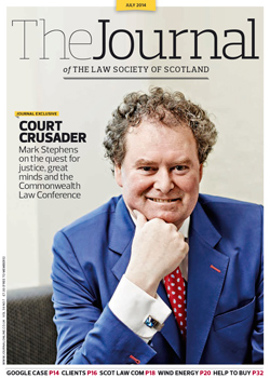Planning: how does the wind blow?

On 23 June the Scottish Government published two key planning policy documents, the third national planning framework (NPF3) and second consolidated Scottish Planning Policy (SPP). The publication of both policies was awaited with interest by the renewables industry and the onshore wind sector in particular.
NPF3: renewables support
The National Planning Framework (NPF) is the Scottish ministers’ long-term strategy for spatial development. It sets the context for development planning in Scotland and provides a framework for the spatial development of Scotland as a whole. It sets out the Government’s development priorities over the next 20-30 years and identifies 14 national developments which support the development strategy. The need for these developments is set out in NPF3.
The NPF remains supportive of the renewables industry as a whole and restates the Scottish Government’s ambition to be a “world leader in low carbon energy generation”. So far as onshore wind is concerned, NPF3 notes that “onshore wind will continue to make a significant contribution to diversification of energy supplies. We do not wish to see wind farm development in our National Parks and National Scenic Areas. Scottish Planning Policy sets out the required approach to spatial frameworks which will guide new wind energy development to appropriate locations, taking into account important features, including wild land”.
There is a clear statement of continued support for smaller, community and locally owned projects: “Local and community ownership and small-scale generation can have a lasting impact on rural Scotland, building business and community resilience and providing alternative sources of income. Collectively, the potential benefits of community energy projects are nationally significant.” NPF3 also makes reference to areas described as “wild land”, noting that “wild land is a nationally important landscape”.
SPP: new presumption
SPP sets out ministers’ priorities for operation of the planning system and for the development and use of land. A significant inclusion in the new SPP is the “presumption in favour of sustainable development”; it goes on to elaborate that “The planning system should support economically, environmentally and socially sustainable places by enabling development that balances the costs and benefits of a proposal over the longer term. The aim is to achieve the right development in the right place; it is not to allow development at any cost.”
A series of principles are listed which should guide formulation of policy and decisions on individual projects. While SPP does not (and could not) change the primacy accorded to the development plan by s 25 of the 1997 Act, ministers expect to see the presumption reflected in local development plans, and it will be a significant material consideration in decision making where it is not reflected in policy.
Spatial frameworks
Ministers expect local authorities to produce spatial frameworks setting out where they wish to see onshore wind development. The guidance in the draft SPP on this topic was somewhat cumbersome, and set out a variety of constraints to be included in spatial frameworks which were not entirely appropriate for a map-based approach. The new SPP sets out a much-simplified approach, setting out just two tiers of constraint.
Tier 1 sets out areas where wind farm development will not be permitted, i.e. within national parks and national scenic areas. This is not unexpected and is uncontroversial. Tier 2 sets out “areas of significant protection”, where wind farms “may be appropriate in some circumstances”, provided “significant effects on the qualities of these areas can be substantially overcome by siting, design or other mitigation”. It remains to be seen how this test will be interpreted. Certain significant environmental effects – such as visual impacts – are inevitable with wind energy developments, and could never be removed entirely by mitigation and almost certainly not “substantially overcome”. At best, they might be mitigated as far as possible by careful design and location. However, in planning terms the test ought to be whether the impacts are acceptable.
In contrast to the draft SPP, there is no third tier. Instead, outwith groups 1 and 2, “wind farms are likely to be acceptable”, subject to detailed assessment against development plan policy. This is an improvement on the draft SPP, which listed a range of matters which were perhaps not suitable for inclusion in a spatial framework and better left to development plan policy.
Among the issues contained in tier 2 are areas of “wild land”, and a reference to a separation distance “not exceeding” 2km from towns, villages and settlements identified in the local development plan. The approach to these two topics, in particular, was awaited with some interest by the onshore wind industry.
Separation distances
The draft SPP contained wording suggesting that an arbitrary buffer of 2.5km between settlements and wind farm development might be imposed. There are undoubtedly situations where such a separation distance might be appropriate. However, there are many cases where development could very well be acceptable within that distance, given the particular circumstances. The imposition of such an arbitrary limit might also have posed a serious hurdle for the Scottish Government’s ambitions to realise 500MW of community and locally owned renewables.
The SPP suggests that in drawing up spatial frameworks, planning authorities may wish to include a buffer “not exceeding” 2km around settlements, towns and villages identified in the local development plan. The inclusion of this constraint in the section addressing the drawing up of spatial frameworks makes it clear that the settlement distance is not to be used as a tool for deciding individual applications. The previous draft SPP made clear that “decisions on individual developments should take into account specific local circumstances and geography”. That clarification was useful confirmation that the 2km buffer is not to be used as a development management tool, and it is perhaps unfortunate that more explicit statement to that effect is not included in the final SPP.
In drawing up separation distances, planning authorities are directed to consider individual topography and key views from the towns, settlements and villages in question when including this factor in their spatial frameworks. The inference is that, in some cases, a 2km settlement boundary might not be required or justified. No doubt this will leave open room for argument in individual cases as to whether the definition of a particular settlement buffer was appropriate.
Wild land
The issue of wild land has been controversial, with concerns being expressed both from those interested in seeing it further protected and those concerned about the implications for land use, from across a wide range of sectors.
“Wild land” is defined by Scottish Natural Heritage (SNH) as those areas in Scotland having the characteristics of “high wildness”. Factors which contribute to “high wildness” include a high degree of perceived naturalness in the setting, little evidence of contemporary human uses of the land, a lack of any modern artefacts or structures, landform which is rugged or otherwise physically challenging, and remoteness and/or inaccessibility. “Wild land” is not necessarily areas of true “wilderness”, in that the description does not imply a complete absence of human activity or influence.
The SPP and NPF3 were accompanied by a new map produced by SNH showing 42 areas of wild land, covering 19.5% of Scotland (down from 20.3% in the draft). The map is to be used as a “strategic planning tool”, “reflecting that it is the product of desk-based analytical study”. SNH considers that it could be used to inform spatial plans, support strategic plans and promote Scotland’s assets.
Those pushing for greater protection of wild land had argued it should be accorded similar protection to national scenic areas and national parks, despite not having any formal designation. This was opposed not only by the renewables industry, but by other industries concerned about the effect a prohibition on development within areas of wild land might have. In the end result, and although NPF3 identifies wild land as a “nationally important” asset, the SPP clarifies that wild land falls within areas to be accorded “significant protection”.
There is, therefore, no blanket ban on development within such areas. The acceptability of development will have to be assessed on a case-by-case basis. This is acknowledged by SNH, which notes in its advice to ministers on wild land, published at the same time as SPP and NPF3, that: “the particular characteristics and intensity of wildness that is found will vary across a wild land area, and detail of that variation may not always be picked up in a desk-based analysis and broad-brush approach that we have used”; and “Consideration of individual proposals and their potential effect on wildness and areas of wild land will require individual field assessment”. Further guidance is expected from SNH on the particular qualities of each of the areas of wild land and the way in which they expect to see the impacts of development on those areas assessed.
Adopting a case-by-case approach to the assessment of impacts of development on areas of wild land is appropriate, and reflects the view of ministers expressed in the previous SPP that although wild land areas are sensitive to development, sensitively sited and located development can nevertheless be accommodated within them while maintaining their qualities. As SNH notes, wild land does not equate to wilderness, and the objective is not to ensure that such areas remain wholly redundant or unused.
There is, however, a slight tension between this approach and para 200 of the SPP, which states that: “Wild land character is displayed in some of Scotland’s remoter upland, mountain and coastal areas, which are very sensitive to any form of intrusive human activity and have little or no capacity to accept new development. Plans should identify and safeguard the character of areas of wild land as identified on the 2014 SNH map of wild land areas” (emphasis added). This appears to come close to ruling out any form of “new development” within areas of wild land. This paragraph does not sit well with the approach to the topic set out elsewhere in the SPP. It remains to be seen how that apparent conflict will be resolved.
The publication of NPF3 and SPP signals a continuing degree of political support for the onshore wind industry, tempered slightly by the increasing pressure from certain interests to secure greater protections for large parts of Scotland. That is to be expected, given the important role the industry has to play in meeting the challenging 2020 targets. SPP adopts a sensible approach of focusing on individual assessment of projects rather than attempting to create arbitrary prohibitions on development, except in the case of Scotland’s most valued landscapes, where development would have been unlikely to come forward in any case.
In this issue
- “The Union and the law” revisited
- Cartels: raising the stakes
- The cooling-off catch
- Attack vectors into the law: smartphones
- Money laundering: the Fourth way
- Has Glasgow morality come to Edinburgh?
- Reading for pleasure
- Opinion: Graeme McCormick
- Book reviews
- Profile
- President's column
- 10-year target
- Headline act
- Forget that you ever knew me
- The cooling-off catch (1)
- Tax devolution: the legal implications
- Ninth life
- Planning: how does the wind blow?
- Going off the rails
- Employee shares? Sort them yourself
- Angostura, anyone?
- National priorities
- Scottish Solicitors' Discipline Tribunal
- People on the move
- Heart of the action
- Helping solicitors on Help to Buy
- Conditions countdown
- Where bullocks fear to roam
- Fit to grant?
- Controlling the risks
- Ask Ash
- Opening up the law
- From the Brussels office
- Law reform roundup
- Post-corroboration Review update






